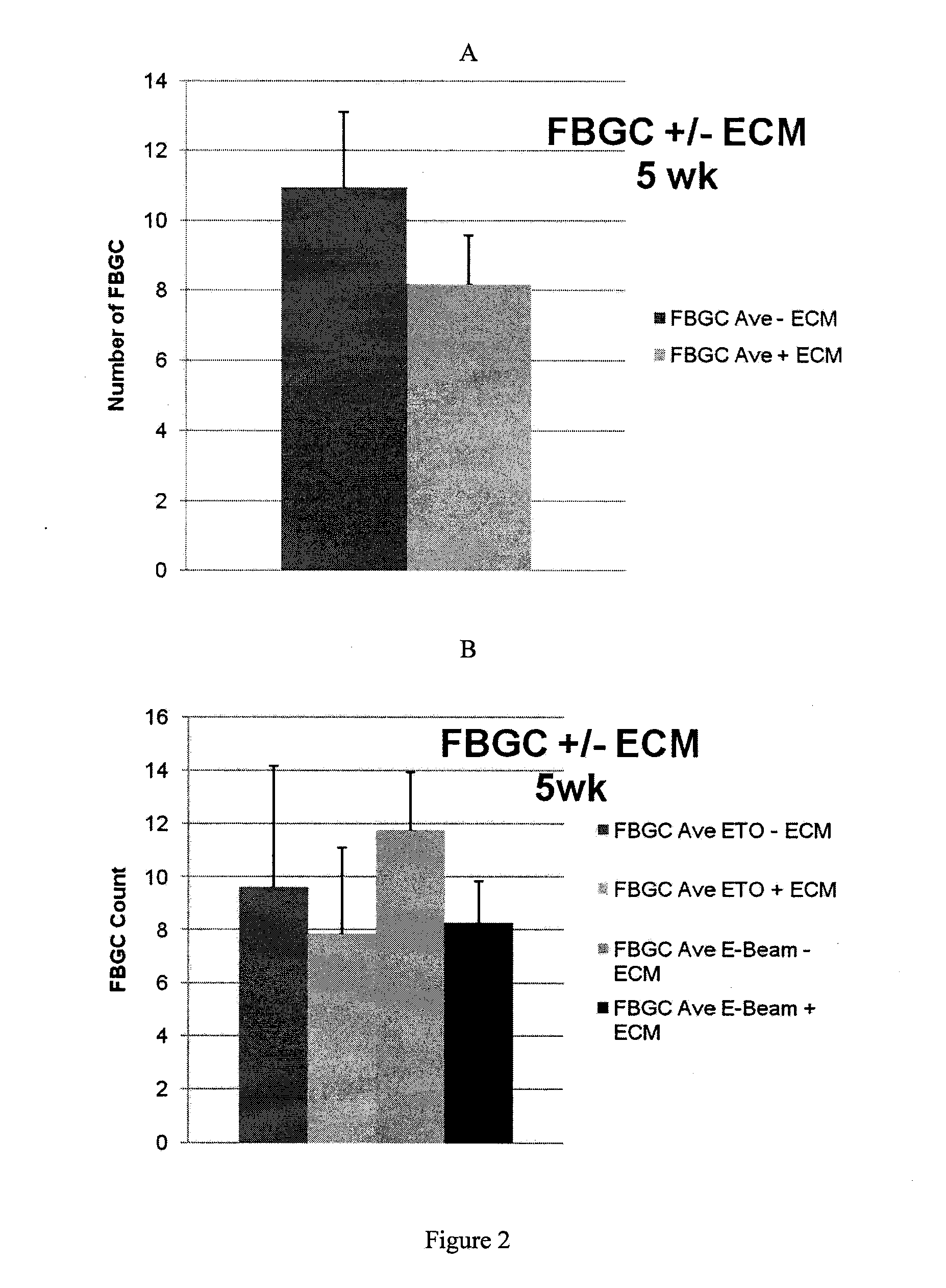Extracellular matrix compositions
a technology of extracellular matrix and composition, which is applied in the direction of skeletal/connective tissue cells, peptide sources, prosthesis, etc., can solve the problems of reducing the effect of gravitational force, no material is completely safe and effective, and causing a variety of physiological and clinical problems, so as to reduce the gravitational force
- Summary
- Abstract
- Description
- Claims
- Application Information
AI Technical Summary
Benefits of technology
Problems solved by technology
Method used
Image
Examples
example 1
Differential Gene Expression in ECM Compositions Grown Under Hypoxic Conditions
[0163]Primary human neonatal foreskin fibroblasts were cultured as standard monolayers in tissue culture flasks and compared to three-dimensional fibroblast cultures, within a naturally deposited, fetal-like ECM. The cultures were grown as disclosed herein. To assess differential expression of genes, samples of total RNA were completed using Agilent Whole Human Genome Oligo Microarrays® for global gene expression (including less than 40,000 genes) following the manufacturer's protocol.
[0164]Upon comparison, fibroblasts were found to regulate collagen and ECM gene expression in three-dimensional cultures within a hypoxic cultured naturally secreted ECM. Upregulation and downregulation of expression of various collagen and ECM genes are evident in Table 3.
TABLE 3Differential Collagen and ECM Expression inHypoxic Three-dimensional Fibroblast CulturesGENEFOLD INCREASEFOLD DECREASECOL4A117.2COL20A16.88COL19A15...
example 2
Production of Hypoxic ECM Using Primary Human Neonatal Foreskin Fibroblasts
[0168]Two examples are provided for hypoxic culture of ECM using primary human neonatal foreskin fibroblasts.
[0169]Primary human neonatal foreskin fibroblasts were expanded in tissue culture flasks in the presence of 10% fetal bovine serum, 90% High Glucose DMEM with 2 mM L-glutamine (10% FBS / DMEM). Cells were subcultured using 0.05% trypsin / EDTA solution until the 3rd passage at which time they were seeded to either Cytodex-1 dextran beads at 0.04 mgs dry beads / ml of medium (5e6 cells / 10 mgs beads in a 125 ml spinner flask filled with 100-120 mls), or to nylon mesh (25e6 cells / 6×100 cm2 nylon). All cultures were kept in normal atmosphere and 5% CO2 for expansion and seeding, at which point low oxygen cultures were split to an airtight chamber which was flooded with 95% nitrogen / 5% CO2 so that a hypoxic environment could be created within the culture medium. This system is maintains about 1-5% oxygen within t...
example 3
Tissue-Engineered Human Embryonic Extracellular Matrix for Therapeutic Applications
[0172]The embryonic ECM creates an environment conducive to rapid cell proliferation and healing without the formation of scars or adhesions. It was hypothesized that the growth of human neonatal fibroblasts in 3 dimensions under conditions that simulate the early embryonic environment prior to angiogenesis (hypoxia and reduced gravitational forces) would generate an ECM with fetal properties. Gene chip array analysis showed the differential expression of over 5000 genes under the hypoxic versus traditional tissue culture conditions. The ECM produced was similar to fetal mesenchymal tissue in that it is relatively rich in collagens type III, IV, and V, and glycoproteins such as fibronectin, SPARC, thrombospondin, and hyaluronic acid. Since the ECM also plays an important regulatory role in binding and presenting growth factors in putative niches which support regenerative stem cell populations with ke...
PUM
| Property | Measurement | Unit |
|---|---|---|
| diameter | aaaaa | aaaaa |
| pore size | aaaaa | aaaaa |
| thick | aaaaa | aaaaa |
Abstract
Description
Claims
Application Information
 Login to View More
Login to View More - R&D
- Intellectual Property
- Life Sciences
- Materials
- Tech Scout
- Unparalleled Data Quality
- Higher Quality Content
- 60% Fewer Hallucinations
Browse by: Latest US Patents, China's latest patents, Technical Efficacy Thesaurus, Application Domain, Technology Topic, Popular Technical Reports.
© 2025 PatSnap. All rights reserved.Legal|Privacy policy|Modern Slavery Act Transparency Statement|Sitemap|About US| Contact US: help@patsnap.com



